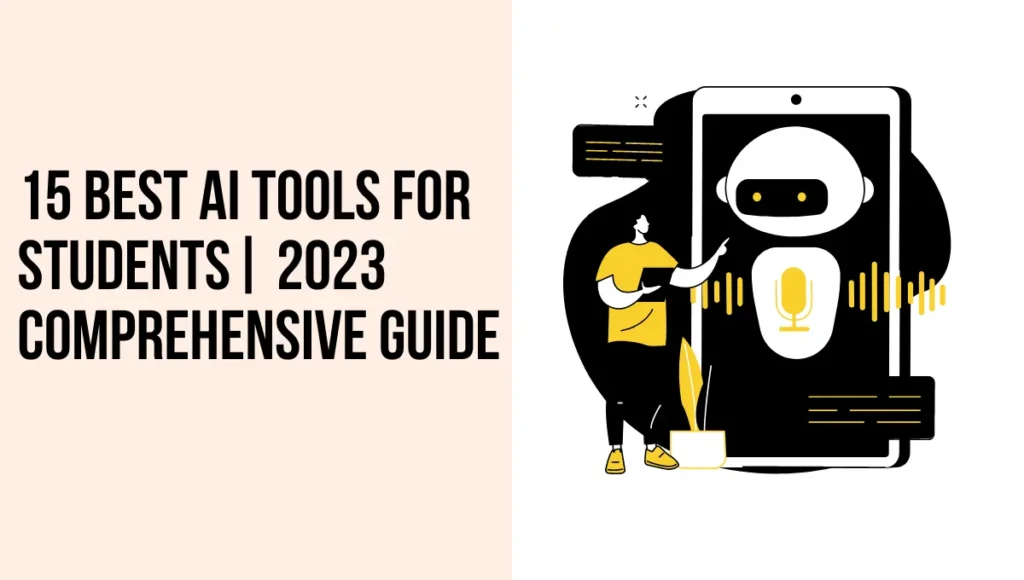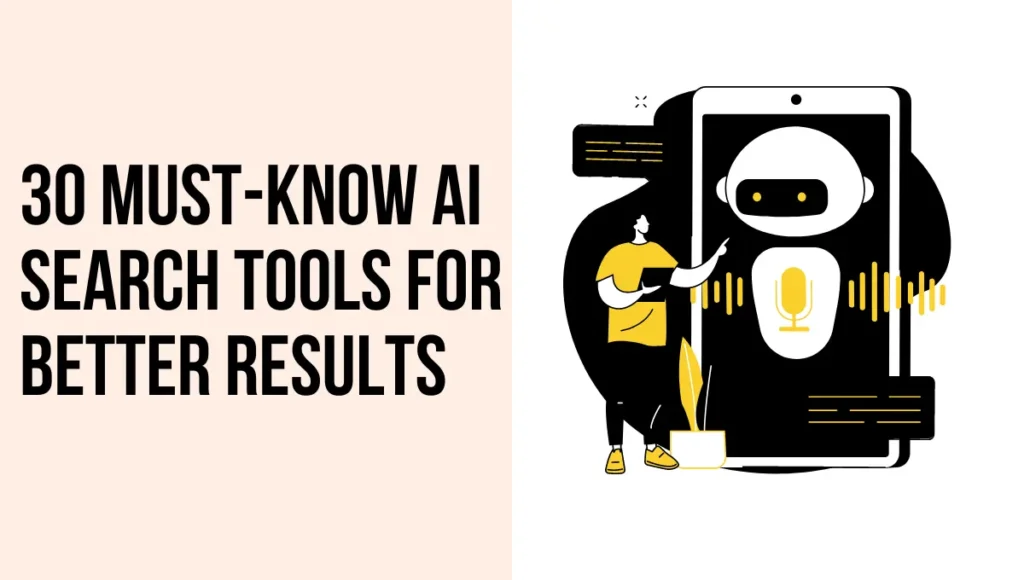Do you like reading? Some stuff sounds like a robot wrote it. That’s because a computer, or AI, did write it. But what if we could make this AI writing sound more like a person wrote it?
That’s what we’re talking about today. We want to make AI writing sound more human. This means it will be more fun to read and feel more real. Let’s learn how to do this!
Understanding AI-Generated Text
So, what is AI writing? It’s when a computer writes stuff. This computer uses big brain power to write. It learns from lots of things people have written before. But sometimes, it sounds a bit off.
It’s like when you hear a song and something feels missing. That’s because while the computer is smart, it doesn’t feel things like we do. It doesn’t know happy or sad like we do.
So, its writing can feel empty. That’s why we need to add a human touch to it. We want to make it sound like a friend is talking to you.
Why Humanizing AI Text is Crucial
Why should we make AI writing sound more human? Here’s why:
- Fun to Read: When writing sounds human, it’s fun to read. It’s like chatting with a friend.
- Trust: People like reading things they can trust. If it sounds human, they trust it more.
- Better for Search Engines: Search engines like Google love good writing. If it sounds human, it might show up higher in search results.
- Sounds like Your Brand: Every company has its way of talking. If AI writing sounds too robot-like, it won’t sound like your company.
So, making AI writing sound human is very important. It makes people want to read it more.
Comprehensive Steps to Humanize AI Text
A. Selecting the Right AI Tools
Not all AI writing tools are created equal. Some are designed purely for speed and efficiency, churning out content that, while technically correct, feels cold and impersonal.
Others prioritize a more human touch, producing content that’s warm, relatable, and engaging. When choosing an AI writing tool, picking one that aligns with your goals is essential.
Do you want quick, efficient content, or are you aiming for a deeper connection with your readers? By selecting the right tool, you’re already halfway to humanizing your AI text.
B. Incorporating Humor and Personal Experiences
Remember the last time you read something that made you chuckle? Or an article that shared a personal story you could relate to? Humor and personal experiences are powerful tools in humanizing AI text.
They make your content memorable, relatable, and engaging. So, when crafting AI-generated content, sprinkle in a joke or two. Share a personal anecdote.
Make your readers feel like they’re having a conversation with a friend, not reading a piece of machine-generated text.
C. Prioritizing Thorough Editing
Editing is like giving your content a makeover. When AI creates content, it’s like a rough draft. It’s got the basics, but it might lack the human touch. That’s where editing comes in.
When you take the time to go over what the AI wrote, you can add your own voice. You can make it sound more like a person and less like a machine. This is a big step to humanize AI text.
Think about your favorite books or articles. They likely went through many rounds of editing. This process made them better. It made them connect with readers. The same goes for AI content.
By editing, you’re making sure it connects. You’re making sure it speaks to the reader. This connection is what makes content special. It’s what keeps readers coming back.
So, when you use AI to help with writing, don’t skip the editing. Take the time to review. Add in your own thoughts. Make it sound like you.
This will not only improve the quality but also humanize AI text. Remember, AI is a tool. It’s there to help. But the final touch, the human touch, comes from you.
D. SEO Considerations for AI Content
SEO is how your content gets seen. It’s like a map that leads people to your work. But good SEO isn’t just about using certain words. It’s also about making content that people want to read.
When you humanize AI text, you’re doing just that. You’re making it more appealing. You’re making it stand out.
But here’s the thing. AI can help with SEO. It can suggest keywords. It can help with structure. But it can’t connect with readers on a human level. Only you can do that.
So, when you’re thinking about SEO, think beyond just keywords. Think about the reader. What do they want? What will make them click? What will make them stay?
By blending AI’s technical help with a human touch, you get the best of both worlds. You get content that ranks well and also feels good to read.
This is the secret to great SEO. It’s not just about being seen. It’s about being remembered. And when you humanize AI text, you’re ensuring your content is both.
E. Aligning AI Content with Brand Voice
Every brand has its own voice. It’s like a fingerprint. It’s unique. When people read your content, they should know it’s you. That’s the power of a strong brand voice.
But when you use AI to write, sometimes that voice can get lost. That’s why it’s so important to make sure AI content sounds like your brand. This is a key step to humanize AI text.
Think about your favorite brands. When you read their content, you can hear their voice. It’s clear. It’s strong. It’s them. That’s what you want for your brand too.
So, when AI gives you content, take a moment. Read it out loud. Does it sound like you? If not, tweak it. Add your own words. Make it fit your brand voice.
Remember, AI is just a tool. It’s there to help, not take over. Your brand voice is yours. It’s special. Don’t let AI change that. Instead, use AI to make your voice even stronger.
Use it to reach more people. But always, always keep your voice. This will not only make your content better but also humanize AI text. Your readers will thank you.
F. Providing Clear Context to AI Writing Tools
AI is smart, but it’s not a mind reader. It needs clear instructions. The clearer you are, the better the content will be.
This is a simple but powerful way to humanize AI text. When you tell AI exactly what you want, it can give you content that’s closer to what you’d write yourself.
Imagine you’re asking a friend for help. If you’re vague, you might not get what you want. But if you’re clear, you’ll get exactly what you asked for. The same goes for AI. Be specific. Give details. The more contexts you give the better.
For example, if you want content about dogs, don’t just say “Write about dogs”. Instead, say “Write about the benefits of adopting senior dogs”.
This gives AI a clear focus. It knows what you want. And when you get the content, it’ll be closer to what you had in mind. This makes it easier to humanize AI text. It’s a win-win.
G. Utilizing Relevant Visuals
Pictures speak a thousand words. They grab attention. They tell a story. That’s why adding visuals to your content is so important. It’s also a great way to humanize AI text. When people see a picture, they connect. They feel something. And that’s what you want.
AI can suggest visuals. It can tell you what might work. But the final choice is yours. Choose pictures that fit your brand. Choose pictures that tell your story. This will make your content stand out. It’ll make it memorable.
For example, if you’re writing about travel, don’t just use any picture of a beach. Use a picture that captures the feeling of travel. Maybe it’s a sunset. Maybe it’s a local market.
The key is to choose visuals that connect with readers. This will not only make your content look good but also humanize AI text.
H. Embracing Creativity and Breaking Conventional Rules
Being creative is fun. It’s also a good way to stand out. When you write, don’t be afraid to be different. This is a great way to humanize AI text. AI can give you the basics, but the creativity? That’s all you.
Sometimes, it’s okay to break the rules. Maybe you start a sentence with “And” or “But”. Maybe you use slang. It’s okay. It makes your content feel real.
It makes it feel human. And that’s what readers want. They want content that feels like a chat with a friend.
So, next time you use AI to write, add your own twist. Be you. Be different. It’ll make your content better. It’ll also humanize AI text. And in the end, that’s the goal. To create content that connects and feels human.
I. Leveraging AI Detectors for Quality Assurance
AI is great. But it’s not perfect. Sometimes, it makes mistakes. That’s why using AI detectors is smart. These tools check AI content. They make sure it’s good. They also help humanize AI text.
Think of AI detectors as a friend. This friend reads your work. They tell you if something’s off. They help you fix it. It’s like a safety net. It makes sure your content is the best it can be.
Using AI detectors is easy. After AI writes and runs the content through the detector, it will check it. It’ll give feedback. Then, you can make changes.
This ensures your content is top-notch. It also helps humanize AI text. It’s a simple step, but it makes a big difference.
J. Implementing A/B Testing for Optimization
A/B testing is like a science experiment. You try two things. You see which one works best. It’s a powerful tool. It helps you learn. It helps you improve. And it’s a great way to humanize AI text.
Here’s how it works. Say you have two headlines. You’re not sure which one’s better. So, you test them. You see which one gets more clicks. This tells you what readers like. It helps you understand them.
By using A/B testing, you’re always learning. You’re always getting better. And that’s key. Because the more you know, the better your content will be.
It’ll be more human. It’ll connect more. And in the end, that’s the goal. To create content that resonates. Content that humanizes AI text.
Unique Tools and Resources for Humanizing AI Text
There are many tools out there. They help make AI content feel human. Some check grammar. Some check tone. Some even suggest changes. These tools are gold. They help humanize AI text.
For example, there’s a tool that checks emotion. It tells you if your content feels happy or sad. There’s another tool that checks clarity.
It makes sure your content is easy to read. These tools are like helpers. They guide you. They make sure your content is the best it can be.
So, if you use AI to write, use these tools. They’ll make your job easier. They’ll also make your content better. They’ll help you connect with readers.
They’ll help you humanize AI text. And in the end, that’s what it’s all about creating content that feels real that feels human.
1. Grammarly

Grammarly is more than just a spell-checker. It’s a writing assistant. It helps you write clear, mistake-free, and impactful content. For those looking to humanize AI text, Grammarly is a must-have tool.
Why? Because AI-generated content can sometimes miss the mark. It might be grammatically correct but lacks a human touch. Grammarly can spot these issues. It checks for tone, clarity, and engagement.
It tells you if you’re content sounds confident, friendly, or even sad. This feedback helps you tweak the content. It helps you make it sound more like you.
But that’s not all. Grammarly also checks for word choice. It suggests better words that fit your message, and resonate with readers.
This is key to humanizing AI text because the right words can make all the difference. They can turn a bland sentence into something memorable.
So, if you use AI to write, consider Grammarly. It’s like a second pair of eyes. It catches mistakes. It gives feedback. It helps you create content that connects content that feels human. Content that [humanizes AI text].
2. Hemingway Editor

The Hemingway Editor is a game-changer. It’s named after Ernest Hemingway, a famous writer known for his clear and simple style.
That’s what this tool does. It helps you write clear and simple content. It’s perfect for those wanting to humanize AI text.
How does it work? You paste your content into the tool. It then checks it. It looks for long sentences. It looks for complex words. It gives feedback. It tells you how to make your content better. It tells you how to make it more readable.
For AI-generated content, this is key because AI can sometimes be wordy. It can use big words when simple ones will do. The Hemingway Editor spots these issues. It helps you fix them. It helps you humanize AI text.
So, if you’re looking to improve your writing, try the Hemingway Editor. It’s simple. It’s effective. It’ll make your content stand out. It’ll make it resonate with readers. It’ll help you humanize AI text.
3. Writesonic

Writesonic is a powerful AI writing tool. But it’s not like other AI tools. It’s designed to create content that feels human. It’s perfect for those looking to humanize AI text.
Writesonic uses advanced AI to craft content. It learns from the best online content. It then uses this knowledge to create articles, ads, and more. Content that’s not just good but great. Content that connects with readers. Content that humanizes AI text.
But Writesonic doesn’t stop there. It also offers feedback. It tells you how to improve your content. It gives tips. It suggests changes. It’s like having a writing coach in your pocket. A coach that helps you humanize AI text.
So, if you’re looking for an AI tool that’s different, try Writesonic. It’s not just about efficiency. It’s about quality. It’s about creating content that stands out, content that feels human, and content that humanizes AI text.
4. ProWritingAid

ProWritingAid is like a Swiss Army knife for writers. It’s not just a grammar checker. It’s a style editor, writing mentor, and more. For those aiming to humanize AI text, this tool is invaluable.
Why is ProWritingAid so special because it goes deeper? It doesn’t just spot mistakes. It helps you understand them. It offers detailed explanations. This helps you learn.
It helps you grow as a writer. And for AI-generated content, this is crucial. It ensures the content doesn’t just sound human. It sounds like a skilled human writer wrote it.
The tool also offers style suggestions. It spots passive voice. It finds repetitive words. It even checks for sentence length. All these features help humanize AI text. They ensure the content is engaging. They ensure it’s clear. They ensure it resonates with readers.
So, if you’re using AI for writing, pair it with ProWritingAid. Let the AI draft the content. Then use ProWritingAid to polish it. Content that shines, that feels human, and that humanizes AI text.
5. Sapling AI

Emails, chats, documents – we write so much every day. Sapling AI is here to help. It’s an AI writing assistant. But it’s designed with a human touch. It’s perfect for those wanting to humanize AI text.
Sapling AI works everywhere. It integrates with Gmail, Slack, and more. As you write, it offers suggestions. It spots mistakes. It suggests better phrasings.
It ensures your writing is the best it can be. And for AI-generated content, this is a game-changer. It adds that missing human element. It makes the content feel real. It helps humanize AI text.
But Sapling AI isn’t just reactive. It’s proactive. It learns from you. It understands your style. Over time, its suggestions get better.
They get more personalized. It’s like having a writing partner. A partner that knows you. A partner that helps you humanize AI text.
So, if you’re looking for an AI tool with a personal touch, try Sapling AI. It’s smart. It’s intuitive. It’s the perfect blend of tech and touch. It’s the future of writing. It’s the future of [humanizing AI text].
6. Copy.ai

Meet Copy.ai – the future of content creation. It’s an AI-powered writing tool. But it’s designed with creativity in mind. It’s perfect for those looking to humanize AI text.
Copy.ai is versatile. It can craft blog posts, ads, and more. But it’s not just about efficiency. It’s about quality. It uses advanced AI to create content.
But it ensures this content feels human. It ensures it’s engaging. It ensures it’s unique. This is key to humanizing AI text.
The tool also offers collaboration features. You can work with teammates. You can get feedback. You can refine the content together.
This ensures the final piece isn’t just good. It’s great. It’s content that stands out. It’s content that humanizes AI text.
So, if you’re looking for an AI tool that values creativity, try Copy.ai. It’s not just a tool. It’s a partner. It’s there to help you create. It’s there to help you shine. It’s there to help you humanize AI text.
7. Undetectable.ai

Undetectable.ai is a tool. It helps make AI writing sound like a person wrote it. This is good because sometimes AI writing can sound a bit strange. But with “Undetectable.ai”, the goal is to make it sound normal. This helps humanize AI text.
How does it work? Well, it learns from lots of things people write. It then uses what it learns to write in a way that sounds human. This is important.
People like reading things that sound like a person wrote them. It feels more real. It feels truer. That’s why tools like “Undetectable.ai” are so helpful. They humanize AI text.
So, if you write things using AI, think about using “Undetectable.ai”. It can help make your writing better. It can make it sound more like you and that’s a good thing.
People like reading things that sound real. They like feeling a connection. And when you humanize AI text, you make that connection.
What is the Best Way to Humanize AI-Generated Content for Free?
AI is cool. It can write stuff for us. But sometimes, it doesn’t sound like a person. So, how can we make it sound more human without spending money? Let’s find out how to humanize AI text for free.
First, always read what the AI writes. Does it sound like something you’d say? If not, change it. Make it sound like you. This is a simple way to humanize AI text.
Next, ask a friend to read it. They can tell you if it sounds right. They can give you tips. This feedback is gold. It helps you see where you need to make changes. It helps you humanize AI text.
Also, use free online tools. There are many out there. They can check your writing. They can give suggestions. They can help make your content better. They’re free! So, you can humanize AI text without spending a dime.
In the end, making AI content sound human is about effort. It’s about taking the time to check. It’s about making changes. It’s about using tools. And with a little work, you can humanize AI text for free.
Conclusion
AI is amazing. It helps us do so much. But when it writes, it can sound a bit off. That’s why we need to humanize AI text. We want our content to connect. We want it to feel real.
We’ve talked about many ways to do this. We’ve talked about tools like “Undetectable.ai”. We’ve talked about checking our work. We’ve talked about getting feedback. All these steps help humanize AI text.
But the most important thing is care. We need to care about our content. We need to make sure it sounds right. We need to make sure it feels human. Because when we humanize AI text, we make a connection. We reach our readers. We make them feel something.
So, next time you use AI to write, remember to add your touch. Remember to make it sound like you. Remember to humanize AI text. It’s worth the effort. It makes all the difference.
Here are a few other hand-picked articles for you to read next:
- Exploring Powerful Textbot AI: How It Transforms Your Daily Life
- WriteSonic AI Review – Discover The Top Secrets Of SEO Success
- Surfer SEO AI : Powerful Tool To Boost Your Website’s Ranking
- Discover The Magic Of Copy.Ai: Easy Writing For Everyone
FAQs
How do you humanize AI text?
Humanizing AI text involves making machine-generated content sound more like it was written by a human. This can be achieved in several ways:
Understand the Audience: Know who you're writing for. Tailor the AI's output to match the tone and style that resonate with your target audience.
Add Personal Touch: Introduce anecdotes, real-life examples, or even humor where appropriate.
Review and Edit: AI-generated content might be grammatically correct, but it can sometimes lack nuance. Always review and make necessary edits to ensure the content aligns with human sensibilities.
Use Conversational Language: Instead of formal or robotic language, opt for a conversational tone. This makes the content more relatable.
Feedback Loop: Continuously train the AI with feedback. The more it learns from human input, the better it gets at mimicking human-like text.
Is there a free tool to humanize AI text?
Yes, there are several free tools available that can help in refining and humanizing AI-generated text. One popular option is the Hemingway Editor. It's a free online tool that highlights complex sentences, passive voice, and offers suggestions to make your writing clearer and more direct. By running AI-generated content through Hemingway, you can simplify and humanize the text. Another option is Grammarly's free version, which checks for basic grammar, punctuation, and tone, helping to make AI text sound more human. Additionally, many AI writing platforms have built-in feedback mechanisms that allow users to refine outputs over time, making the content sound more human-like with each iteration. It's always a good idea to combine the power of these tools with human review to ensure the highest level of humanization.
What is the best AI bypass detection tool?
When it comes to detecting AI-generated content, "undetectable.ai" stands out as one of the best tools in the market. Designed with cutting-edge technology, it specializes in differentiating between human-written and AI-generated text, ensuring authenticity in content.
What makes "undetectable.ai" a top choice is its deep learning algorithms. These algorithms are trained on vast datasets, allowing the tool to recognize the subtle patterns and nuances typical of AI-generated content. This means even if the AI content is of high quality and closely mimics human writing, "undetectable.ai" can spot it.
Another advantage of "undetectable.ai" is its user-friendly interface. It's designed to be intuitive, making it easy for users, even those without technical expertise, to check content quickly. The tool provides detailed feedback, highlighting areas that seem AI-generated and offering insights into its analysis.
How do you humanize a chatbot?
Humanizing a chatbot involves making it interact in a manner that's relatable and feels less robotic. Here's how you can achieve this:
Personalized Greetings: Instead of generic greetings, make your chatbot greet users based on the time of day or their previous interactions.
Use Natural Language Processing (NLP): Implement NLP to enable the chatbot to understand and respond to user queries in a more human-like manner.
Add Emojis and GIFs: Just like humans use emojis and GIFs in chats, incorporating them can make interactions more lively and relatable.
Avoid Overloading Information: Ensure your chatbot provides information in digestible chunks, similar to how a human would converse.
Learn from Interactions: Continuously gather data from user interactions and refine the chatbot's responses. The more it learns, the better it can mimic human-like interactions.
By following these steps, chatbots can offer a more human-like and engaging user experience.








